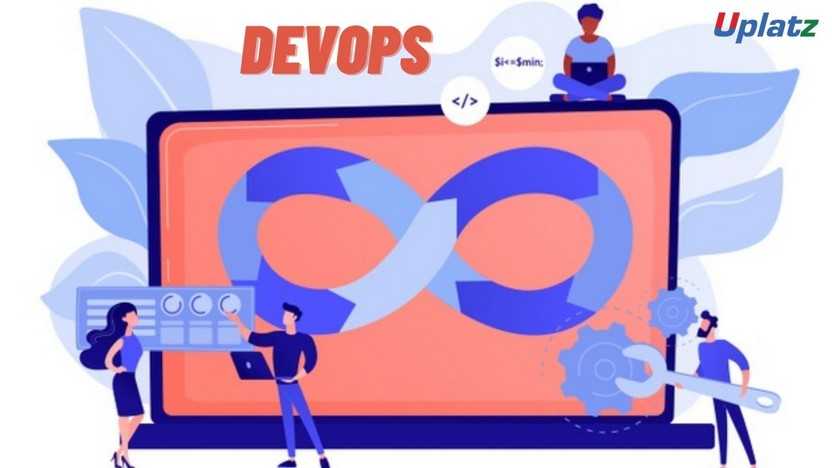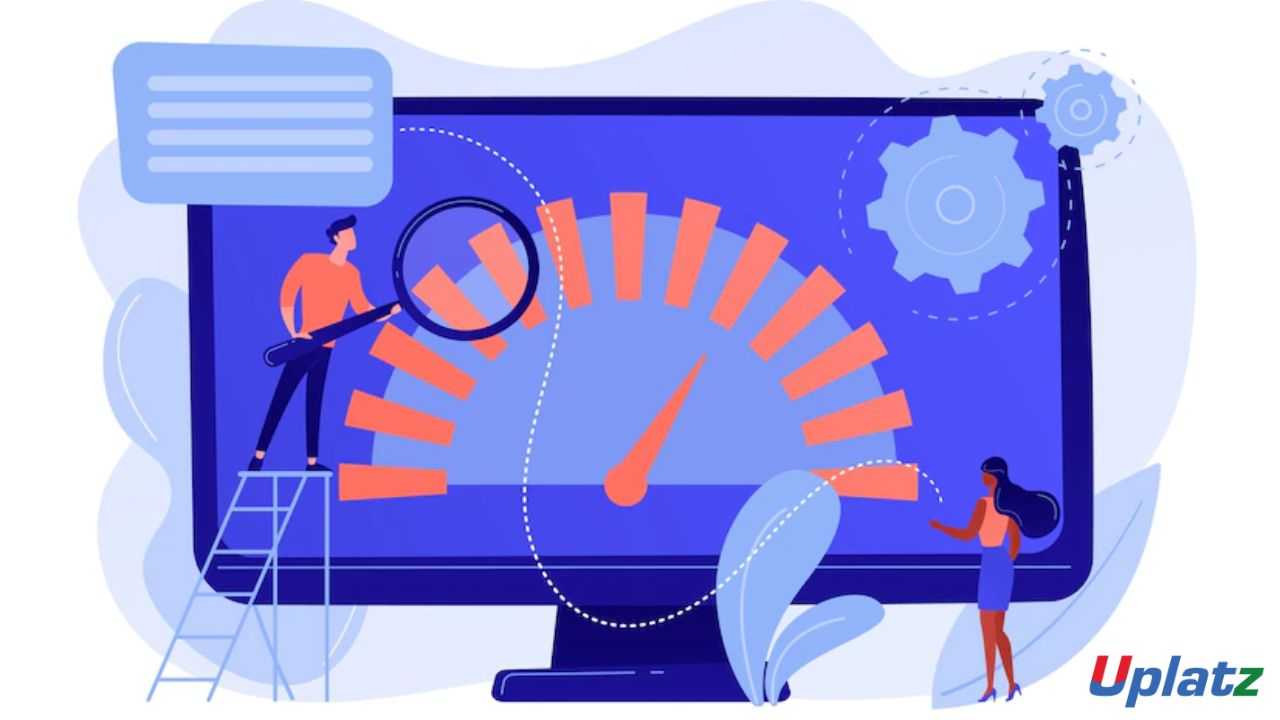AppDynamics Essentials
Master AppDynamics Essentials: Real-Time Monitoring, Troubleshooting, and Optimizing Applications for Career Growth in IT and DevOps.Preview AppDynamics Essentials course
Price Match Guarantee Full Lifetime Access Access on any Device Technical Support Secure Checkout Course Completion Certificate 92% Started a new career
BUY THIS COURSE (
92% Started a new career
BUY THIS COURSE (GBP 12 GBP 29 )-
 88% Got a pay increase and promotion
88% Got a pay increase and promotion
Students also bought -
-

- DevOps
- 20 Hours
- GBP 12
- 1677 Learners
-

- Software Performance Engineering and Multicore Programming
- 11 Hours
- GBP 12
- 131 Learners
-

- Data Science with R
- 25 Hours
- GBP 12
- 479 Learners

About the Course: AppDynamics Essentials – Mastering Application Performance Monitoring (Self-Paced Online Course)
In a world where digital transformation drives business growth, application performance has become one of the most critical success factors for modern organizations. Downtime, slow response times, and performance bottlenecks can lead to poor user experiences, loss of revenue, and reputational damage. To meet growing customer expectations and business demands, organizations must ensure their applications are always performing at peak efficiency. That’s where AppDynamics—Cisco’s industry-leading Application Performance Monitoring (APM) platform—comes into play.
The AppDynamics Essentials course is a self-paced online training program designed to give you a solid foundation in monitoring, analyzing, and optimizing the performance of enterprise applications using AppDynamics. Whether you're a DevOps professional, IT operations manager, application developer, or a system administrator, this course will provide you with the practical skills needed to keep modern applications healthy, fast, and resilient.
Delivered through high-quality pre-recorded video lectures, interactive demos, hands-on tasks, and real-world use cases, this course offers maximum flexibility while maintaining depth and technical rigor. You can learn at your own pace, revisit complex topics anytime, and apply what you’ve learned through practice exercises. Upon successful completion, you'll receive a Course Completion Certificate from Uplatz, demonstrating your competence in using one of the most advanced APM tools in the market.
Why AppDynamics Matters
AppDynamics enables teams to monitor every aspect of application performance, from backend code execution and database queries to user experience and business transaction impact. By using intelligent analytics and AI-driven alerts, AppDynamics allows IT teams to detect anomalies, trace root causes, and resolve issues faster—often before users are even aware of them.
With increasing complexity in today’s hybrid and cloud-native environments, the ability to gain real-time visibility across distributed systems is no longer optional—it’s essential. AppDynamics provides this holistic observability by integrating seamlessly with cloud platforms, DevOps pipelines, and infrastructure services.
This course goes beyond theory by walking you through real-world monitoring scenarios, helping you understand how to:
- Set up and configure AppDynamics agents (App, Machine, and Database agents).
- Map application topology and visualize user journeys.
- Monitor business transactions and critical workflows.
- Analyze performance bottlenecks and identify root causes.
- Set up dynamic baselines and smart alerts for anomalies.
- Integrate AppDynamics with DevOps and CI/CD tools for continuous monitoring.
Who This Course is For
The AppDynamics Essentials course is tailored for a wide range of professionals seeking to build or advance a career in application monitoring, performance management, or reliability engineering, including:
- DevOps Engineers who want to integrate APM into their continuous delivery pipelines.
- System Administrators and IT Support Teams managing large-scale enterprise applications.
- Application Developers interested in tracing code-level performance issues.
- Cloud Architects who need deep visibility into hybrid cloud application stacks.
- Site Reliability Engineers (SREs) aiming to ensure maximum uptime and reliability.
- Anyone new to APM tools and looking for a structured, hands-on learning experience.
Whether you're maintaining legacy applications or building modern microservices, this course offers the essential tools and techniques for monitoring application health in real time.
What You Will Learn
This course provides a well-rounded understanding of AppDynamics, covering the following key areas:
- The core architecture and components of the AppDynamics platform.
- Installing and configuring Java, .NET, and Machine Agents.
- Creating application flow maps and monitoring service dependencies.
- Setting up business transactions for tracking performance across workflows.
- Using dashboards and health rules to visualize application metrics.
- Leveraging alerts and anomaly detection with baseline comparisons.
- Troubleshooting slow transactions, memory leaks, and infrastructure issues.
- Implementing end-user monitoring to capture frontend performance.
- Integrating with DevOps tools such as Jenkins, Docker, and Kubernetes.
- Exporting and interpreting reports for performance optimization and business impact analysis.
Through hands-on labs and examples, you'll gain the confidence to apply AppDynamics to real-life environments, helping organizations resolve problems faster and deliver superior digital experiences.
How to Use This Course Effectively
To ensure you get the most out of your self-paced learning experience, follow this practical approach:
1. Prepare Your Learning Environment
Before starting, ensure you have access to a test application and permission to install AppDynamics agents (or use a virtual lab). You may use a local web app, demo app, or cloud-based sandbox provided by AppDynamics.
2. Follow the Recommended Learning Path
The course is designed to build your knowledge step-by-step. Start with the introductory modules—even if you’re familiar with APM—to grasp AppDynamics-specific terminology and workflows. Gradually progress to advanced topics like alerts, baselines, and integrations.
3. Practice What You Learn
Each concept is accompanied by a practical example or lab. As you watch the videos, replicate the steps in your environment. Try modifying parameters and experimenting with settings to understand their impact. This hands-on engagement will reinforce your understanding.
4. Take Notes and Create Cheat Sheets
Keep a notebook or digital document where you jot down key concepts, commands, and configuration steps. Create quick-reference sheets for agent setup, dashboard creation, alert configuration, and health rule management. These will be invaluable during interviews and on the job.
5. Build a Mini Project
Apply your knowledge by monitoring a sample application from start to finish. Set up agents, track transactions, configure custom dashboards, and simulate performance issues to observe how AppDynamics reacts. This mini project can be showcased in your portfolio or used during job interviews.
6. Revisit Challenging Topics
Use the pause and rewind features to revisit complex sections. Spend extra time on agent configurations, business transactions, and troubleshooting, as these are core skills in real-world scenarios.
7. Explore Beyond the Course
After completing the course, explore AppDynamics’ official documentation, blogs, and community forums. This will help you stay up to date with new features, use cases, and integrations with emerging tools like OpenTelemetry and Cisco Observability Platform.
8. Earn and Share Your Certificate
Once you finish all course modules and exercises, download your Course Completion Certificate from Uplatz. Share it on LinkedIn, list it on your resume, and use it to validate your expertise in application performance monitoring.
Become an APM Specialist with AppDynamics
Mastering application performance monitoring with AppDynamics opens the door to high-impact careers in DevOps, cloud operations, and application reliability. This course gives you the knowledge and practical experience needed to monitor and optimize applications at scale—empowering businesses to deliver high-quality user experiences consistently.
Whether you aim to enhance your current role or transition into a new one, AppDynamics Essentials equips you with the tools to thrive in modern digital environments. Start your journey today and take the lead in ensuring performance, reliability, and success for enterprise applications.
Course/Topic 1 - Coming Soon
-
The videos for this course are being recorded freshly and should be available in a few days. Please contact info@uplatz.com to know the exact date of the release of this course.
By the end of this course, learners will be able to:
- Understand the Core Principles of Application Performance Monitoring (APM) and the strategic role of AppDynamics in modern IT ecosystems.
- Explore the AppDynamics Architecture, including the function and interaction of agents, controllers, and dashboards.
- Install and Configure AppDynamics Agents for monitoring applications, databases, and infrastructure components.
- Visualize Application Performance through flow maps, business transaction monitoring, and real-time metrics.
- Set Up Health Rules and Alerts to detect anomalies and trigger automated responses for proactive performance management.
- Analyze and Troubleshoot Issues using transaction snapshots, diagnostic tools, and deep-dive analytics.
- Monitor End-User Experience and understand how front-end performance impacts business outcomes.
- Integrate AppDynamics with External Tools, including DevOps pipelines, log management systems, and cloud platforms.
- Implement APM Best Practices for performance tuning, resource optimization, and operational visibility.
- Prepare for Industry Certification and Career Advancement in roles such as Application Performance Engineer, DevOps Specialist, or IT Operations Analyst.
AppDynamics - Course Syllabus
- Introduction to AppDynamics
- Overview of application performance monitoring (APM)
- Introduction to AppDynamics and its key features
- Understanding the benefits of proactive application monitoring and optimization
- Installing and Configuring AppDynamics
- Installation and setup of AppDynamics Controller
- Configuring agents for application instrumentation
- Integrating AppDynamics with applications, servers, and infrastructure components
- Application Performance Monitoring (APM)
- Monitoring application performance metrics such as response time, throughput, and error rate
- Identifying and analyzing performance bottlenecks using transaction snapshots and call graphs
- Setting up alerts and notifications for performance thresholds and anomalies
- End-User Monitoring (EUM)
- Monitoring user interactions with web and mobile applications
- Tracking user experience metrics such as page load time, bounce rate, and conversion rate
- Analyzing client-side performance and user engagement data
- Business Transaction Monitoring
- Defining and monitoring critical business transactions within applications
- Correlating transaction performance with business impact and KPIs
- Prioritizing troubleshooting efforts based on business transaction performance
- Infrastructure Monitoring
- Monitoring the health and performance of servers, virtual machines, containers, and cloud resources
- Collecting infrastructure metrics such as CPU utilization, memory usage, and network traffic
- Analyzing infrastructure performance data to optimize resource utilization and capacity planning
- Distributed Tracing and Microservices Monitoring
- Tracing requests as they traverse through microservices architectures
- Visualizing transaction flows and dependencies across distributed environments
- Monitoring performance and identifying bottlenecks in microservices-based applications
- AI-Powered Insights and Anomaly Detection
- Leveraging machine learning and AI algorithms for analyzing performance data
- Detecting anomalies, predicting performance trends, and automating root cause analysis
- Using AI-powered insights to optimize application performance and enhance user experience
- Integration and Automation
- Integrating AppDynamics with CI/CD pipelines, ITSM systems, and other monitoring tools
- Automating remediation actions and workflows based on performance alerts and events
- Facilitating collaboration and information sharing across teams using AppDynamics integrations
- Dashboards and Reporting
- Creating custom dashboards and reports to visualize performance data and KPIs
- Tracking key metrics and performance trends over time
- Generating ad-hoc reports and analytics to support decision-making and optimization efforts
- Best Practices and Optimization Strategies
- Best practices for configuring and fine-tuning AppDynamics for optimal performance monitoring
- Optimization strategies for improving application performance and resource utilization
- Implementing proactive monitoring and optimization workflows to prevent performance issues
This syllabus covers a comprehensive range of topics to equip participants with the knowledge, skills, and practical experience needed to effectively monitor, troubleshoot, and optimize application performance using AppDynamics.
Upon successful completion of the AppDynamics Essentials: Mastering Application Performance Monitoring course, learners will receive a Course Completion Certificate from Uplatz, validating their skills in monitoring, analyzing, and optimizing application performance using AppDynamics.
This certification is a valuable credential that highlights your expertise in one of the industry’s leading APM tools. It enhances your professional profile and opens up opportunities in DevOps, IT operations, and site reliability engineering (SRE) roles.
In addition to providing in-depth training and hands-on experience, this course also serves as a strong foundation for those preparing to pursue official AppDynamics or APM-related certifications. Learners will develop the practical knowledge and confidence needed to successfully attempt industry-recognized certification exams in the performance monitoring and observability domain.
Completing the AppDynamics Essentials: Mastering Application Performance Monitoring course opens the door to a range of high-demand career opportunities in IT operations, DevOps, and performance engineering. As businesses increasingly rely on complex, distributed applications, the need for professionals skilled in monitoring and optimizing application performance has never been greater.
After completing this course, learners can pursue roles such as:
- Application Performance Monitoring (APM) Specialist
- AppDynamics Consultant or Engineer
- DevOps Engineer
- Site Reliability Engineer (SRE)
- IT Operations Analyst
- Infrastructure Monitoring Specialist
Industries such as finance, e-commerce, healthcare, telecommunications, and technology actively seek professionals with AppDynamics expertise to ensure the reliability, performance, and scalability of their digital systems.
Whether you're aiming to enter the APM space, enhance your DevOps capabilities, or support mission-critical applications, this course provides the practical skills and platform knowledge needed to stand out in today’s tech-driven job market.
- What is AppDynamics and how does it support Application Performance Monitoring (APM)?
AppDynamics is a comprehensive Application Performance Monitoring (APM) solution that provides real-time visibility into the performance and health of applications. It helps monitor, diagnose, and optimize application performance across complex, distributed systems, enabling proactive issue resolution and performance optimization. - How does AppDynamics collect performance data from applications?
AppDynamics uses agents (Java, .NET, Node.js, etc.) that are installed within the application infrastructure to collect detailed performance metrics. These agents capture data such as response times, throughput, error rates, and system resource usage, which is then sent to the AppDynamics controller for analysis and visualization. - What is a Business Transaction in AppDynamics, and why is it important?
A Business Transaction (BT) is a key concept in AppDynamics that represents a unit of work or a business process within the application, such as user logins or order transactions. BTs allow you to monitor and measure the performance of specific user transactions, helping to identify bottlenecks and optimize critical business operations. - How does AppDynamics' Flow Map help in monitoring application performance?
The Flow Map in AppDynamics visually displays the architecture and interactions of applications, services, and infrastructure components. It helps users understand the dependencies and flow of requests, making it easier to pinpoint performance issues and trace the root cause of failures in distributed systems. - What are health rules in AppDynamics, and how do they help in performance monitoring?
Health rules define the thresholds for performance metrics (e.g., response time, error rate) that indicate the health of an application or service. When a metric exceeds the defined threshold, AppDynamics generates an alert, enabling teams to take corrective actions before an issue impacts end-users. - What is a transaction snapshot in AppDynamics, and how is it used?
A transaction snapshot is a detailed, time-stamped record of a single business transaction. It captures data such as execution time, database queries, and backend services involved. This snapshot is used for in-depth diagnostics, helping to identify performance bottlenecks and optimize specific parts of the transaction flow. - How does AppDynamics support end-user monitoring (EUM)?
AppDynamics offers End-User Monitoring (EUM) to track and analyze user experience across web and mobile applications. By capturing real-time data on page load times, user interactions, and network performance, EUM helps to understand how application performance impacts the end-user experience. - How can AppDynamics help in troubleshooting slow application performance?
AppDynamics helps troubleshoot slow application performance by providing detailed metrics on response times, backend dependencies, database queries, and external services. Through its transaction snapshots, flow maps, and real-time metrics, users can trace the root cause of slowdowns, such as inefficient database queries or network issues. - What are the main benefits of using AppDynamics for application performance monitoring?
AppDynamics provides several benefits, including: - Real-time performance visibility across applications and infrastructure.
- Proactive issue detection with health rules and alerts.
- In-depth diagnostics with transaction snapshots and detailed performance metrics.
- Seamless integration with cloud, on-premises, and hybrid environments.
- Optimized end-user experience monitoring and mobile performance insights.
- How does AppDynamics integrate with other DevOps tools and CI/CD pipelines?
AppDynamics integrates with popular DevOps tools such as Jenkins, Ansible, and Kubernetes, enabling continuous monitoring within CI/CD pipelines. It helps teams maintain application performance throughout the development lifecycle, automatically detecting performance issues introduced during new releases and deployments.









